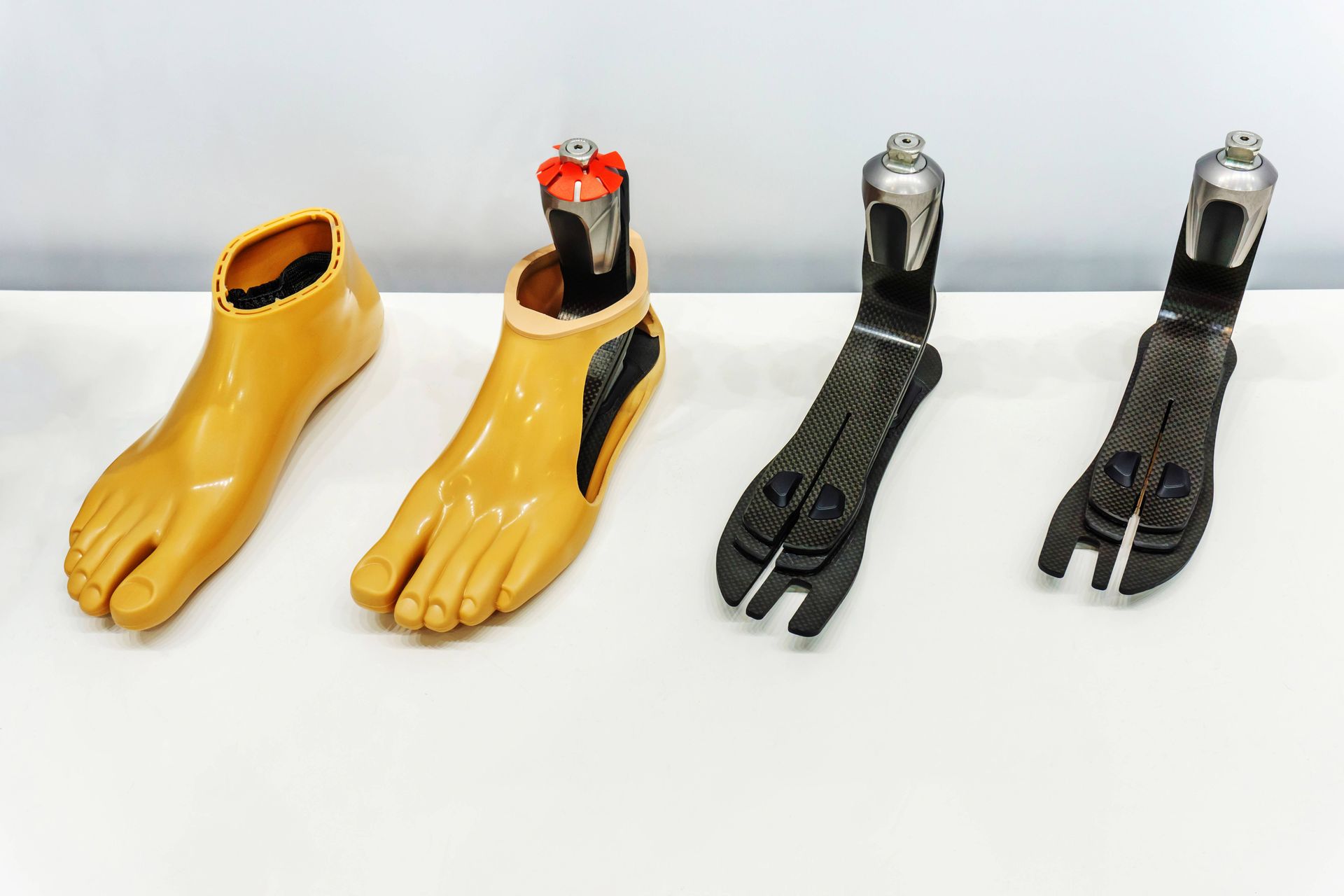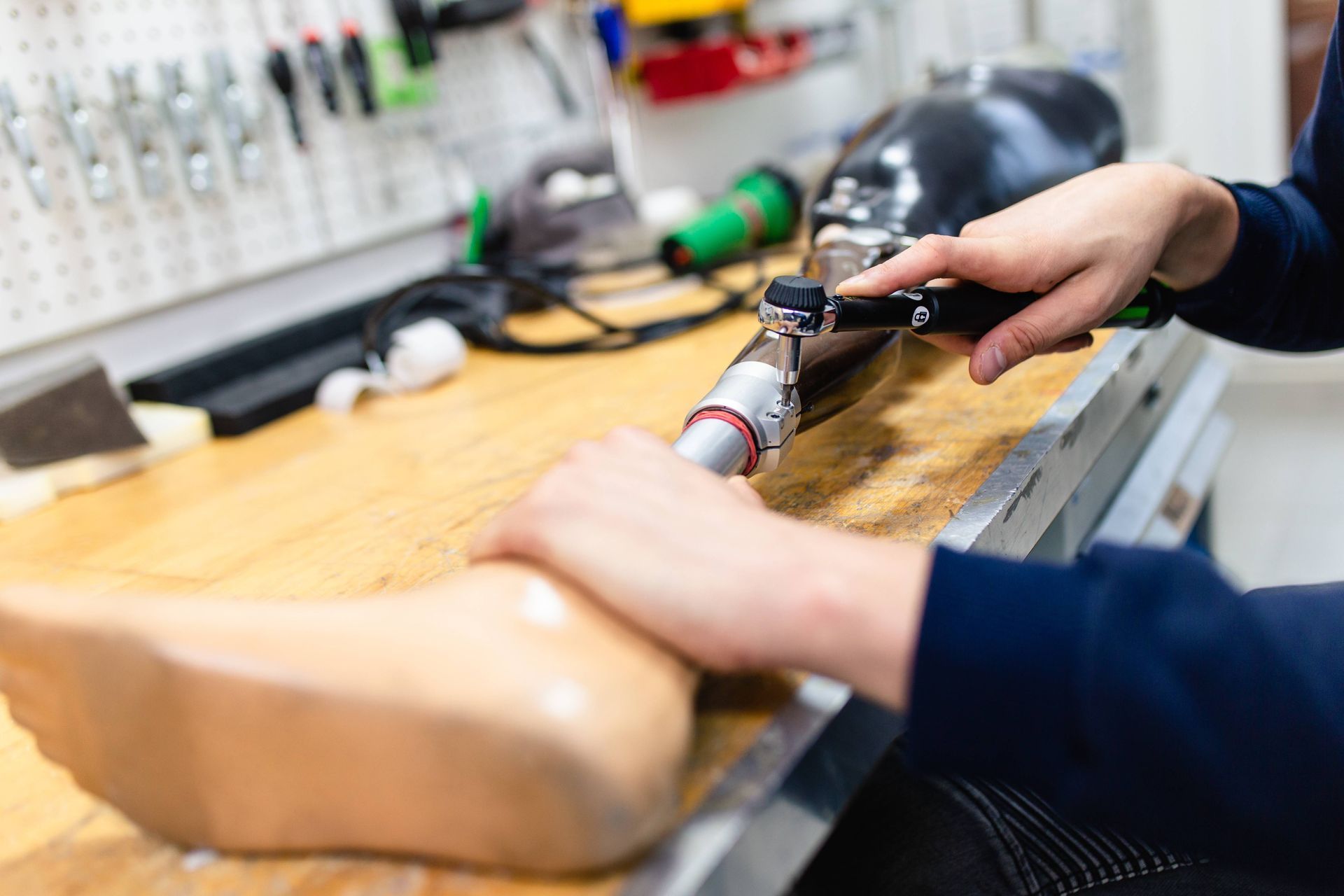Durrett's Orthotics & Prosthetics sells prosthetic feet near Edgewood, KY, and Lawrenceburg, IN, and our experts help clients select prosthetics to match their specific activity levels and lifestyle requirements. Choosing the right prosthetic foot is a weighty decision that significantly impacts daily mobility and quality of life for amputees. We advocate for educating our clients, and understanding the categories of prosthetic feet is a fine starting point.

The Categories of Prosthetic Feet
SACH Feet (Solid Ankle Cushion Heel)
As one of the most basic prosthetic foot designs, the SACH Feet has a solid ankle joint with a compressible heel wedge that absorbs shock during heel strike. The simple design makes SACH Feet a durable, cost-effective option for users with lower activity levels. Their lightweight construction reduces energy expenditure during walking, so they’re also suitable for elderly users and those with limited mobility.
Dynamic Response Feet
Dynamic response prosthetic feet contain energy-storing materials like carbon fiber to provide spring-like action during walking. The stored energy is released during push-off for a more natural gait pattern. Athletes and other active users like these prosthetics; the design enhances propulsion and reduces fatigue during extended walking and other activities.
Multiaxial Feet
Multiaxial prosthetic feet allow movement in multiple planes for improved adaptation to uneven terrain. They have ankle joints that permit dorsiflexion, plantarflexion, inversion, and eversion movements. Users appreciate the improved balance on slopes, stairs, and irregular surfaces. Multiaxial feet particularly benefit individuals who work outdoors and enjoy recreational activities.
Single Axis Feet
Single-axis feet provide controlled dorsiflexion and plantarflexion through a mechanical ankle joint. Compared to SACH designs, they offer more natural ankle motion, durability, and affordability. The controlled movement helps users achieve a smoother heel-to-toe gait pattern, reducing compensatory movements in other joints.
Hydraulic and Pneumatic Feet
Hydraulic and pneumatic prosthetic feet use fluid or air-filled chambers to control ankle motion, automatically adjusting to different walking speeds and terrains. The dampening mechanisms provide smooth, controlled movement that closely mimics natural ankle function.
Considerations for Prosthetic Feet Selection
When comparing prosthetic feet, we ask clients about their activity levels, assessing factors like:
- Walking speed.
- Terrain requirements.
- Sports and recreational activities.
- Work demand.
The individual’s weight, residual limb condition, and overall health status also influence prosthetic foot selection. Proper fitting and alignment drive optimal performance, regardless of the prosthetic foot category chosen. We recommend regular follow-up appointments for continued proper function and address any adjustment needs that may arise.
Frequently Asked Questions
Q: How long do prosthetic feet typically last?
A: Most prosthetic feet last between 3-5 years with proper care and maintenance, though active users may require replacement sooner.
Q: Can I participate in sports with prosthetic feet?
A. Yes, manufacturers design categories of prosthetic feet for athletic activities.
Q: Are prosthetic feet waterproof?
A. Some prosthetic feet offer water-resistant features, but most are not fully waterproof.
Q: How much do prosthetic feet cost?
A. Costs vary based on technology level, ranging from several hundred to several thousand dollars. Insurance coverage varies by provider and policy.
We Supply Quality Prosthetic Feet Near Edgewood, KY, and Lawrenceburg, IN
Our certified prosthetists work closely with every client to ensure optimal fit, function, and comfort. Our customer base is in Kenton County and Boone County, KY; and Dearborn County, IN. Contact us today for a consultation.





